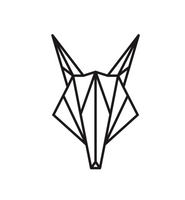Why Leather?

Why Leather?
We wanted to tell you the answers to this frequently asked question and explain why we work with leather material.
First, we'll admit that we love leather. Smell, texture, getting better with age, unique texture It's kind of... This versatility makes leather one of the best materials to work with.
How Sustainable Is Leather?
Genuine leather has been used as a sustainable product for centuries. As a result of the researches, most people prefer real leather instead of products made from artificial leather, which they find unstable, due to the short duration of use. Shoes and bags made of artificial leather are not used even for a season. it starts to crack, tear and thus become unusable. Use Although it is wasteful to use products with such a limited lifespan, it also contains petroleum material . In addition, if artificial leather products are not made of organic materials, they cannot be recycled to nature , especially polyester material is impossible to recycle into nature .
Modern technology has allowed innovation in the leather industry . Because the development of chemicals and advanced processing methods have greatly expanded the aesthetic and leather feel as well as possible applications. Leather has become the luxury material of choice not only for commercial and residential furniture, but also for automotive, aerospace and marine applications.
Part of the argument against leather is that as a sustainable material, leather processing requires significant amounts of water and energy. It also contains a wide variety of chemicals. But ; Thanks to new energy and water-saving technologies, the environmental footprint of leather processing can be significantly reduced.
For example; There are solutions available where the use of chemicals is reduced by one third compared to conventional tanning processes . A range of 100% natural products with a fermentation process in the tanning process is also available. Bio- based natural oils have also been developed instead of petroleum-derived intermediates .
As much as we love leather, we also love the innovative spirit of these times when alternative sustainable materials are created. For example, materials made from natural materials such as cork... Yet authentic leather surpasses most of these alternative materials. When properly treated and maintained, real leather can last several lifetimes. For example, Einstein's leather jacket being sold at auction or second-hand leather jackets, bags in vintage shops…
In addition to several lifetimes of use The row , leather material and the design it is applied to never lose their style. When produced responsibly, the natural durability of leathers makes it one of the most sustainable materials we can work with. For these reasons, we love leather and trust it to be sustainable.
Often the question arises: Don't we care about animals?
Of course we care and we care a lot. We think that respect for animals is the top priority and we try to treat leather with respect.
We are aware that leather will never be an animal friendly product. Because leather; Made from dead animal skin. However, the leather used to make leather comes from animals raised for their meat. It is a by-product of the leather, dairy and meat industries. We basically think it's a waste product and they make it a useful and beautiful material.
Animals are kept as livestock for milk and food, and any part taken from the animal after processing or for natural reasons is used for their meat. From the meat to the bone to the hides we use to make leather … If every piece was not used , it would be wasteful and disrespectful to this animal.
That's why we adopt the philosophy of Mongolian nomads to preserve, process and protect their animals that died of natural causes. Storage is a sustainable source of income for the nomadic community.
This is why; We never use skins from hunting, endangered or exotic animals . to the S shot in We oppose its use and its inclusion in the fashion industry.
With the right care, leather is one of the most durable and sustainable materials. We prefer manufacturers who process leather in a way that we have learned from history and minimize its impact on the environment, and those who turn to new and environmentally friendly practices .
Traditional leather , tanning process has been heavily criticized for its environmental impact . But leather can also be environmentally friendly. Although it seems that there are not many options on the market yet, there are actually . Manufacturers producing environmentally friendly, chrome-free leather that recycle and treat wastewater in tanning is also included . .
We take our leather material and assemble it by hand. The fact that the service life is long in parallel with the care of the leather and that it can be converted into a second hand product ensures the sustainability of the leather. We choose leather material because it is a material that gets better with age and the more you use the product, the more unique it becomes.
Our biggest effort is to choose quality leathers and transform them into products that will last a long time , and are timeless and fashion classics.
Natural leather is not only strong, durable and sustainable. Leather also appeals to the senses . It offers something that no other material can match - it is unique. It celebrates the features that distinguish sameness in the hands of a skilled craftsman.



